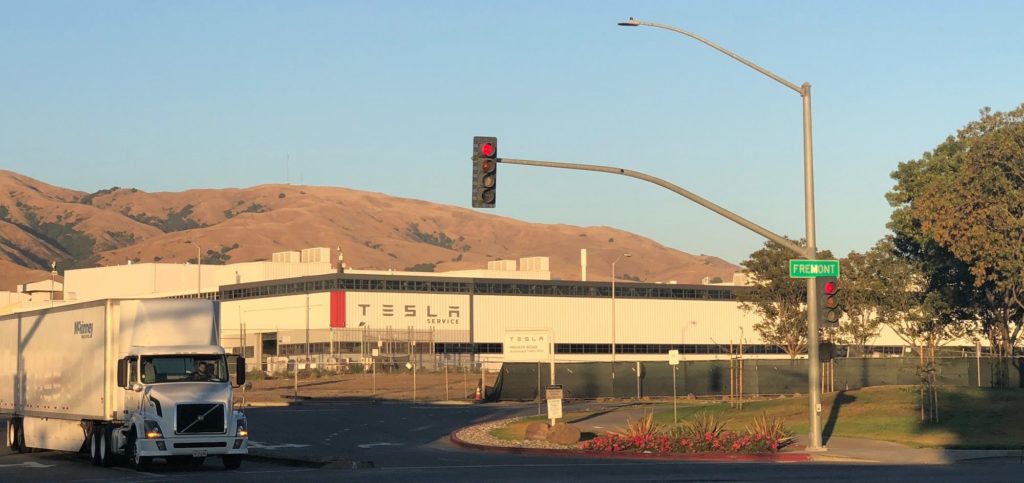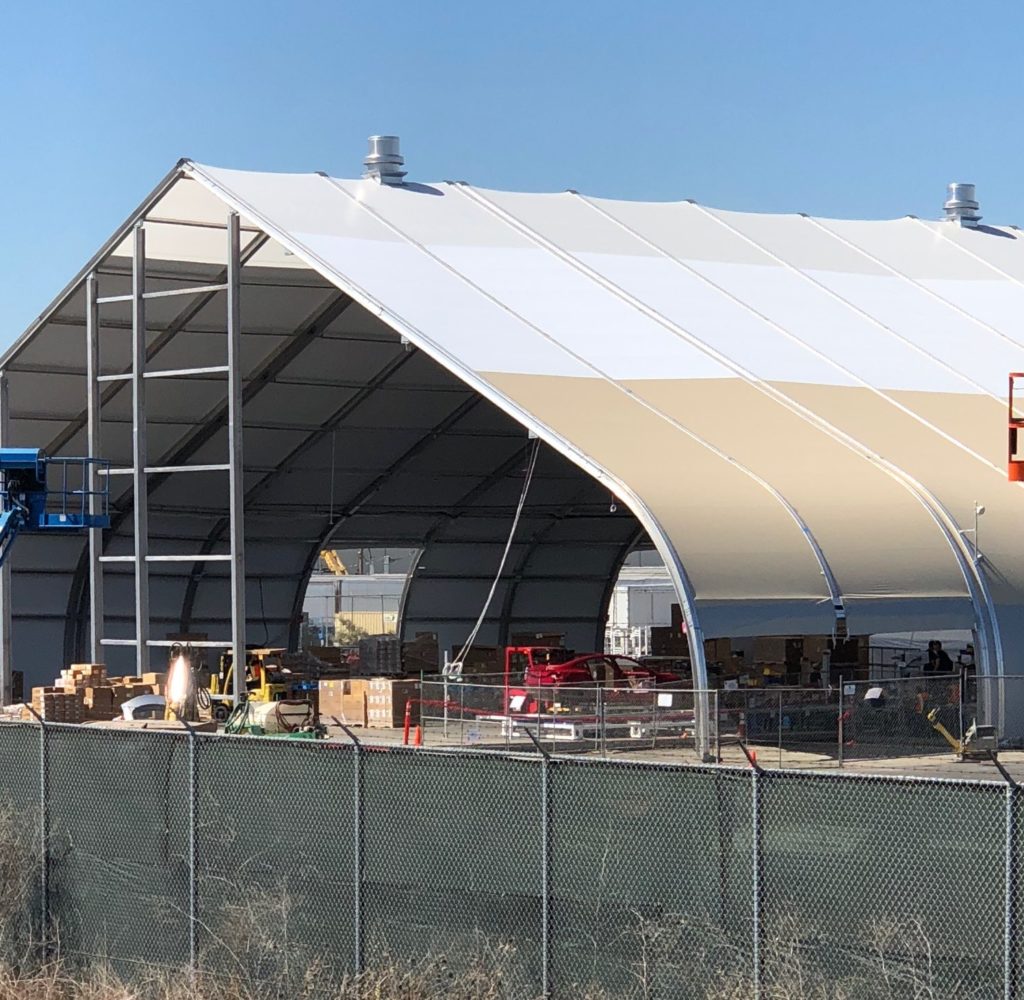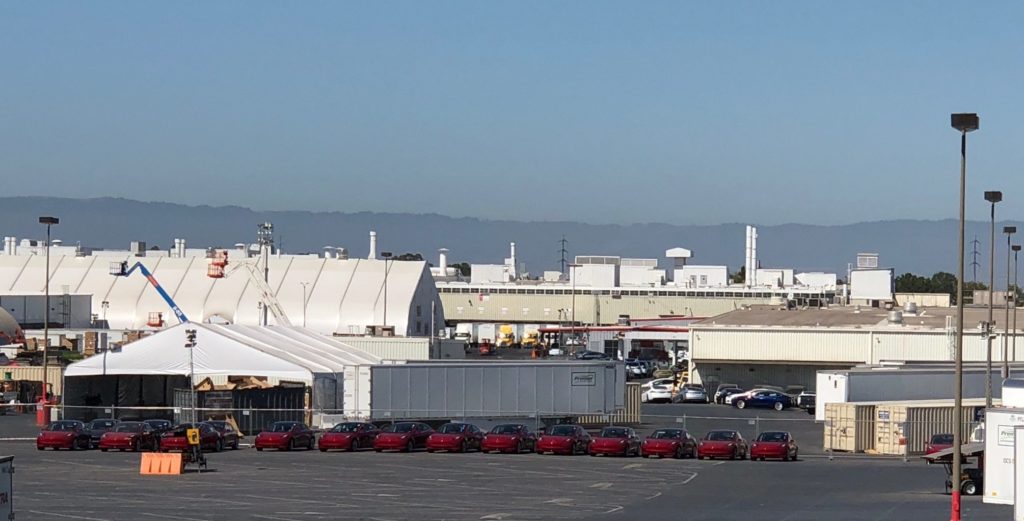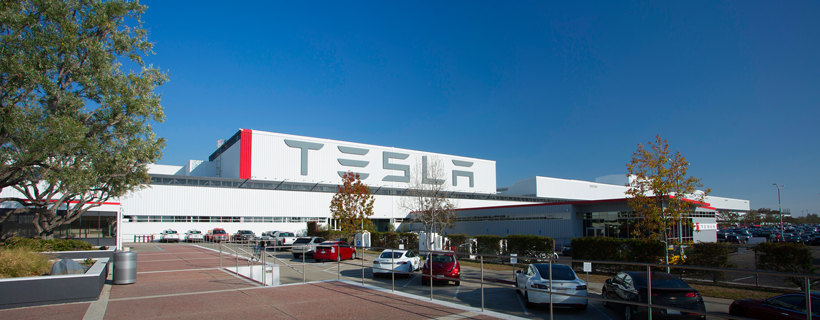- We spent 3 days last week observing Tesla’s Fremont factory to gauge Model 3 production.
- Based on observing trucks exiting Fremont (with Model 3s inside), we believe that the final week of production for the June quarter will be between 4,300 and 4,900. While this would fall slightly below Tesla’s 5,000 per week target, we view this as a win for the Tesla story.
- These production levels would represent a doubling of the weekly run rate over last quarter.
- We expect Model 3 production will continue to scale to 6,000 per week by the end of September laying the groundwork for the company to turn cashflow-positive in the Dec-18 quarter.

Big picture. It’s no secret that Model 3 production exiting the Jun-18 quarter is the key metric for the Tesla story. Elon Musk has reiterated in recent weeks the company’s plans to produce 5,000 Model 3s per week by the end of the quarter. Based on our 3 days observing the Fremont factory, we believe there is an outside chance that the company hits that production goal. However, there is a high probability that at some point in the final week they produce Model 3s at a run rate that can be extrapolated to 5,000 cars per week (similar to past quarters). While triangulating the exact production number is difficult, it is clear the company is making meaningful progress toward producing the Model 3 at scale, which lays the groundwork for generating cash as early as the end of this year.

Methodology. It’s a daunting assignment to visit Fremont in an effort to triangulate Model 3 production, just ask Loup Ventures’ Mira Wallace, who spent Thursday afternoon until Sunday morning studying the factory’s outer workings. There were, of course, limitations to gathering data; most notably, remaining only on public property. Our observations started from a Marriott hotel room overlooking the factory and evolved to examining the factory from multiple vantage points on the ground. After watching the general assembly line in the much-talked-about tent, we concluded that observing the tent was misleading and that it would be more useful to study the trucks departing the factory. There is more than 1 exit at Fremont, so it is possible we were not able to count all the trucks leaving the factory, but given the location of the parking lot and freeway access, it is unlikely the other exits are heavily trafficked.

Key takeaways:
- Different than Model S and X, Model 3s typically leave the factory in enclosed trailers instead of open trailers and railcars, which offers a speed of delivery advantage.
- We believe a truck can carry up to six Model 3s at a time (3 on the top, 3 on the bottom), and we assume that each truck was full.
- We estimate 75% of trucks leaving Fremont contained Model 3s (details below).
- Putting it all together yields a current production rate of ~4,300 Model 3s per week. An exact number is difficult to predict given the unknowns discussed below. The takeaway, however, is that production could fall slightly below the 5,000 per week target, but has ramped nicely from the March quarter. Despite this “miss,” we view Model 3 production of 4,300 per week as a win for the Tesla story.
The takeaway is that production could fall slightly below the 5,000 per week target, but has ramped nicely from the March quarter.
Analysis of our observations. First, the general assembly line in the tent is likely being misread by Tesla-watchers. We believe the activity in the tent is not representative of actual output. The weekly production number we backed into did not include input from the GA line in the tent, but rather information gathered from watching trucks exiting the factory. We were able to count the trucks over a ~20-hour period that spanned both night and day. Departures at night outpaced those during the day by a factor of 5.
The trailers that carried the Model 3s were branded XTRA, McKinney, and Premier. We confirmed with a Tesla store that Model 3s are, in fact, delivered in enclosed trailers. That said, the biggest variable in the accuracy of our conclusions is our assumption related to the percentage of trucks that leave Fremont with Model 3s on board. Because some trucks exiting the factory may have been empty or carrying raw materials, it is not safe to assume that all trucks were full of Model 3s. However, we’ve learned that Model 3s are delivered in the type of enclosed trailers that were leaving Fremont consistently over the weekend. Of all the enclosed trailers leaving Fremont, we assume 75% contained Model 3s and we assume all trailers with Model 3s are filled with the maximum of 6 cars. Extrapolating the average daily and nightly trucks departing per hour over a weekly basis, with the assumptions listed above, our exercise indicates that Tesla is producing ~4,300 Model 3s per week.

Future observations. This is the first time we have done this exercise, which means we don’t have the benefit of comparative data. Our 3 days of observations may have come at a time of relatively high or relatively low production. Future analyses will benefit from comparative data. That said, we gained valuable insight into the Model 3 production rate. Production is scaling nicely and Tesla is moving toward a cashflow positive business with long-term sustainability.
Disclaimer: We actively write about the themes in which we invest: virtual reality, augmented reality, artificial intelligence, and robotics. From time to time, we will write about companies that are in our portfolio. Content on this site including opinions on specific themes in technology, market estimates, and estimates and commentary regarding publicly traded or private companies is not intended for use in making investment decisions. We hold no obligation to update any of our projections. We express no warranties about any estimates or opinions we make.
